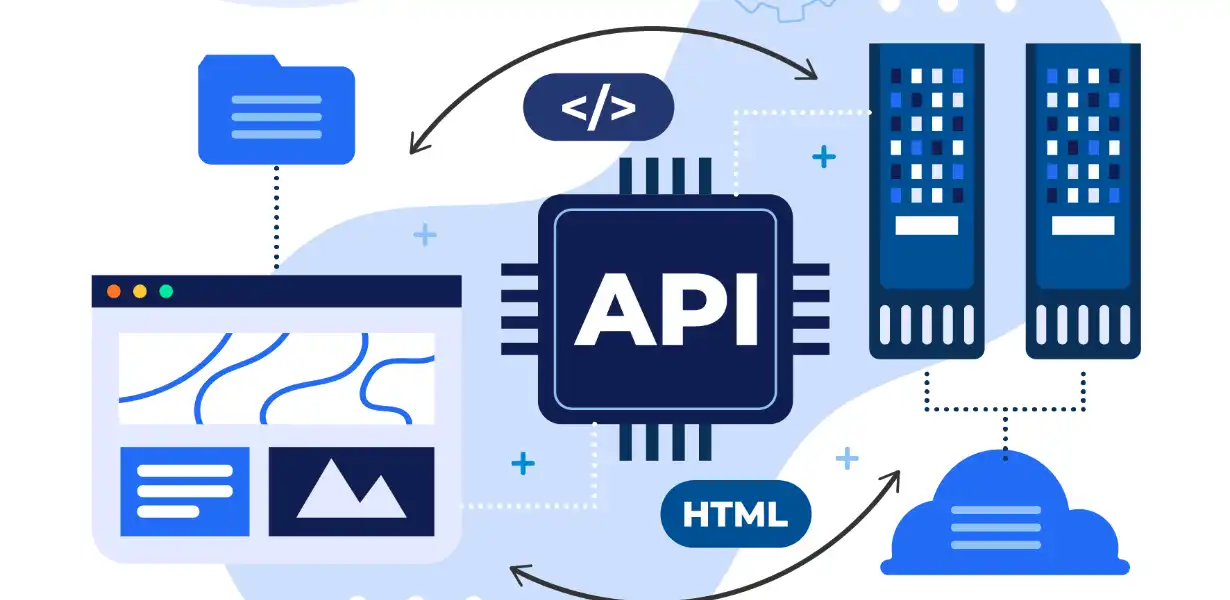
Web API Integration in Healthcare: Revolutionizing Patient Care and Data Management
- Post
- August 8, 2023
- Web API Integration, Web APIs, Web Technologies
- 0 Comments
In the rapidly evolving landscape of healthcare, the integration of web APIs has emerged as a transformative force, reshaping the way patient care is delivered and data is managed. The seamless interaction between diverse systems, facilitated by web API integration, has paved the way for efficient information exchange, enhanced decision-making, and improved patient outcomes. This article delves into the intricacies of web API integration in healthcare, uncovering its impact, benefits, challenges, and the path forward.
In the intricate realm of healthcare, where timely and accurate data can mean the difference between life and death, the integration of web APIs has emerged as a game-changer. A web API (Application Programming Interface) serves as a bridge that enables different software systems to communicate and share data with each other. Imagine a scenario where patient data seamlessly flows from electronic health records (EHR) to diagnostic equipment, and treatment plans are adjusted in real-time based on the insights gathered. This is the power of web API integration in healthcare.
The Advantages of Web API Integration in Healthcare
- Efficient Data Exchange: One of the paramount advantages of web API integration is the efficient exchange of patient data. APIs facilitate the real-time transfer of information between EHRs, medical devices, and other systems, ensuring that healthcare providers have the most up-to-date and accurate information at their disposal.
- Enhanced Decision-Making: With integrated systems, healthcare professionals can make well-informed decisions based on a comprehensive view of patient data. APIs enable the aggregation of data from various sources, enabling a holistic assessment of a patient’s health status and history.
- Interoperability: In a landscape where diverse software systems are in use, achieving interoperability is a challenge. Web API integration helps overcome this hurdle by creating a standardized means of communication, allowing different systems to understand and process data uniformly.
- Telemedicine and Remote Monitoring: The integration of web APIs has fueled the growth of telemedicine and remote patient monitoring. Health data collected from wearables and IoT devices can be seamlessly transmitted to healthcare providers, enabling remote consultations and proactive interventions.
- Personalized Treatment: APIs empower healthcare providers to develop personalized treatment plans by tapping into a wealth of patient data. This individualized approach can lead to more effective treatments and improved patient satisfaction.
Challenges in Web API Integration
- Data Security and Privacy: The integration of APIs raises concerns about data security and patient privacy. Ensuring compliance with regulations like HIPAA is paramount to safeguard sensitive patient information.
- Technical Complexity: Integrating diverse systems with varying technical specifications can be complex. Standardization efforts are essential to streamline the integration process and ensure seamless communication.
- Reliability and Scalability: Healthcare systems need to be highly reliable and scalable. Ensuring that APIs can handle high volumes of data and maintain performance is crucial for uninterrupted patient care.
- Vendor Lock-in: Organizations must consider the potential for vendor lock-in when integrating third-party APIs. A balance between customization and dependency is necessary to prevent future challenges.
The Path Forward
As healthcare continues to embrace digital transformation, the role of web API integration will only grow more significant. Organizations need to prioritize the establishment of robust API management frameworks, emphasizing security, scalability, and interoperability. Collaboration among stakeholders, including healthcare providers, software developers, and regulatory bodies, is vital to create standardized APIs that enhance data sharing while maintaining privacy.
Final Words
In the dynamic landscape of healthcare, web API integration stands as a beacon of innovation, promising enhanced patient care, streamlined data management, and improved outcomes. By weaving together disparate systems, APIs provide healthcare professionals with a comprehensive view of patient health, enabling personalized treatments and data-driven decisions. While challenges exist, the potential benefits are immense, making the integration of web APIs a transformative step towards a more connected and efficient healthcare ecosystem.
Commonly Asked Questions
Q1: How does web API integration impact patient care?
Web API integration empowers healthcare providers to access real-time patient data, enabling informed decision-making, personalized treatments, and remote monitoring, ultimately leading to improved patient care outcomes.
Q2: What are the key challenges in implementing web API integration in healthcare?
Challenges include data security and privacy concerns, technical complexity during integration, ensuring reliability and scalability, and addressing the potential for vendor lock-in.
Q3: How can healthcare organizations ensure data security during web API integration?
Healthcare organizations should prioritize compliance with regulations like HIPAA, implement robust encryption and authentication mechanisms, and conduct regular security audits.
Q4: What role do standards play in web API integration?
Standards are crucial for achieving interoperability and streamlined communication between different systems. They ensure uniform data exchange and facilitate smoother integration processes.
Q5: How can healthcare providers harness the benefits of web API integration?
Healthcare providers should collaborate with IT experts to identify suitable APIs, focus on integrating systems that enhance patient care, and invest in training to maximize the utilization of integrated solutions.




